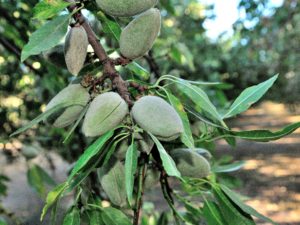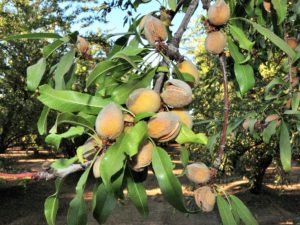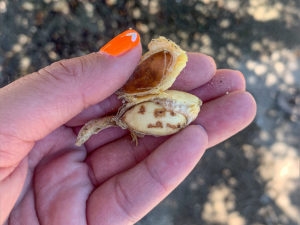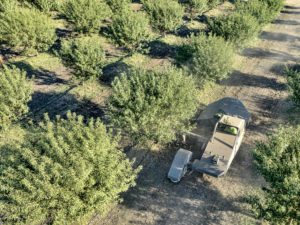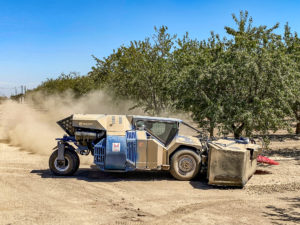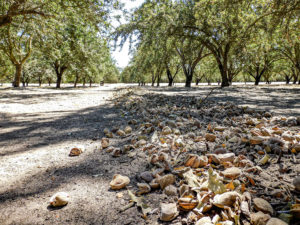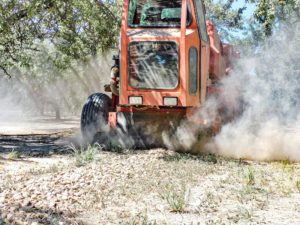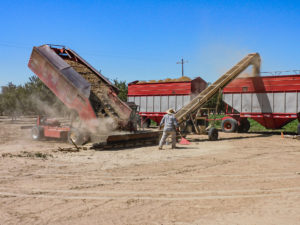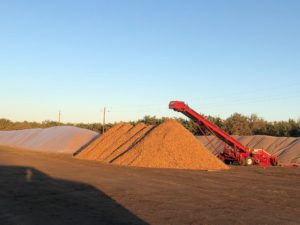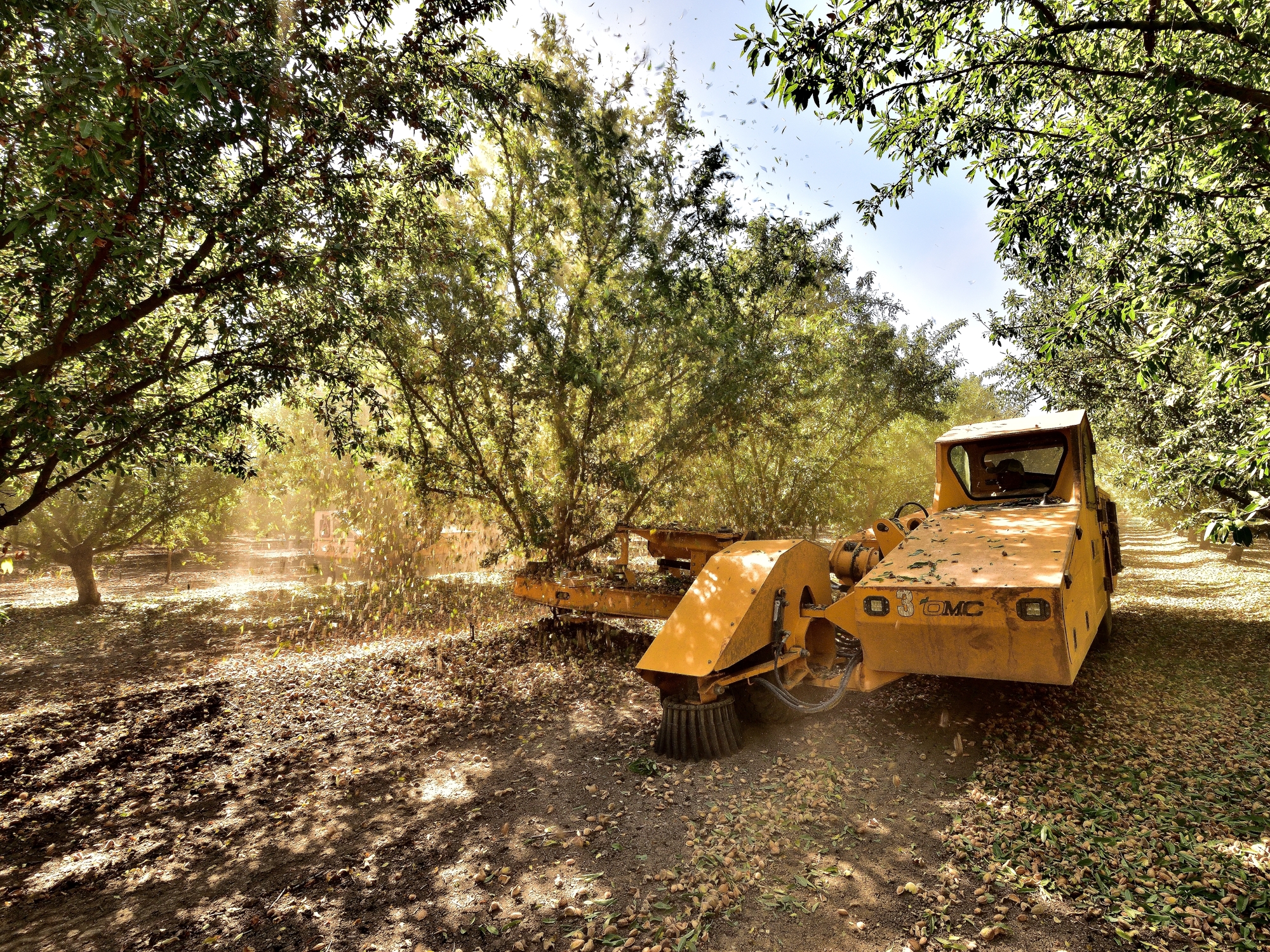
This report covers conditions and observations made between Monday, August 1 and Sunday, August 28, 2022. The next scheduled report will be posted on Monday, October 3, 2022. In the event of any significant occurrences prior to that date, this site will be updated as soon as possible.
The summer season maintained a strong grip on the Central Valley’s weather during August with bright sun and hot days dominating the weather. Daily maximum temperatures ranged from the mid-90’s to just over the century mark during the majority of the period, with readings rising only into the lower 90’s on the “coolest” days during the first and final week of the month. Morning lows, meanwhile, ranged from the lower 60’s to lower 70’s throughout the period. The hot conditions were further complicated by monsoonal moisture that streamed northward from Mexico on several days early in the period, driving the humidity to uncomfortable levels.
Observers are reporting that all areas of the Central Valley are now fully engaged in the harvest. Shakers have been focusing on early maturing Nonpareil and Independence plantings, followed quickly by Sonora and Price. Growers and observers are reporting that for the most part, orchards have been shaking very cleanly. However, some have noted that orchards under the most severe degree of water stress are losing nearly all of their leaves during shaking. Growers have noted that the hot conditions have promoted rapid drying of the crop after shaking, allowing them to sweep and pick up the crop in relatively short order. Per the normal practice, those with water available are opting to provide an irrigation immediately after picking up the Nonpareil, avoiding undo stress on the orchard. Those with self-fertile, single variety plantings are also irrigating and will soon turn their attention towards post-harvest tasks. Many growers have noted that maturity levels of their pollinator varieties are running very close to the Nonpareil. This will allow growers to send shakers back into the orchards as soon as the orchard soils have dried enough to allow safe shaking. As may be seen in the photos accompanying this report, hull split of the mid and later maturing varieties has also begun, indicating that the 2022 harvest may be quite compressed. Signs of the initiation of hull split in the Monterey variety and last-to-harvest Fritz can also be found in advanced plantings around the Valley.
Several themes have emerged during the first weeks of the harvest:
- Within the Sacramento Valley, it is no surprise that yield levels are running significantly below normal levels due to the bloom-time freeze event. Growers are working to harvest the crop as efficiently as possible, combining varieties where possible to reduce passes through the orchard. Many orchards will not be harvested, as yield levels simply do not justify the expense of harvesting.
- Within the San Joaquin Valley, many growers have noted small kernels sizes, even in orchards with adequate water available. Research has shown this to be the result of elevated temperatures during critical period of the growing season impacting the production and storage of carbohydrates within the kernels.
- Huller/sheller managers are reporting that turnout percentages (i.e., the meat weight as a percentage of in the in-hull weight) removed from the orchards are running at below normal levels. This coincides with the previously noted small kernels and reports of an elevated number of “blank” nuts being harvested. Blanks are produced during the bloom, when the hull and shell is initiated but the embryo is not fertilized, and the kernel never develops.
- Damage from Navel Orange Worm (NOW) is running at acceptable levels for most growers. However, some observers have reported elevated damage levels in plantings where growers have reduced efforts to control the insect as they worked to mitigate rising costs. Growers and Pest Control Advisors are monitoring for the next flight of NOW adults, which may impact later maturing varieties if the flight coincides with the hull split. Observers are also reporting incidences of Brown Spot. Generally, a larger issue in several of the pollinator varieties, growers are hopeful that they do not experience serious issues with Brown Spot in the balance of their varieties.
After a slow start, huller/sheller operations are now running product as soon as it arrives from the orchards. Owing to the reduce crop resulting from the bloom-time freeze, operations in the Sacramento Valley are running a greater proportion of the crop upon arrival and diverting a commensurately smaller proportion to stockpiles. As shown in the photo accompanying this report, huller/shellers in the San Joaquin Valley are diverting crop to stockpiles at their locations, while some growers are also stockpiling on the farm. These piles will remain in place until the field harvest has been completed.
While all are hoping for a wet winter season, all are also hoping that the weather remains dry until field harvest operations have been completed.
Mel Machado
Vice President, Member Relations
Photos by: Ben Goudie, KC Clendenin, Trent Voss, Ashley Correia, Kenny Miyamoto, and Mel Machado

